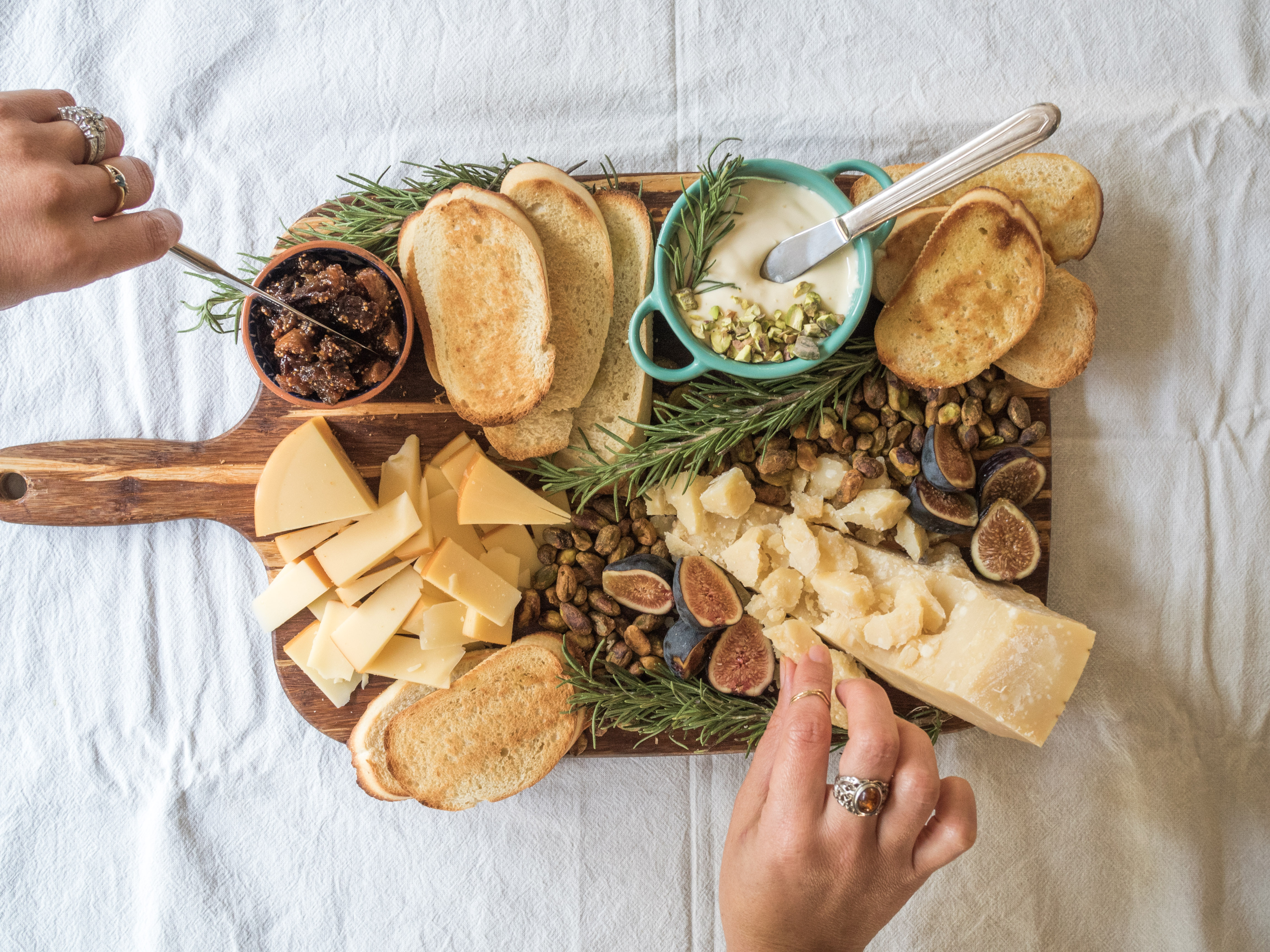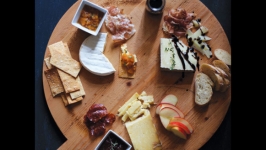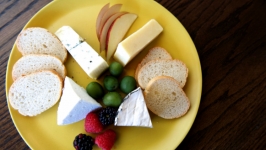The Perfect Holiday Cheese Plate
Making a cheese plate is an art the French have been mastering over the centuries. This is hardly suprising in a country that has 246 varieties of cheese and where 47% of the population eat some daily. However setting up the perfect cheese plate is not as difficult as it looks. Here are some guidelines to create your own plateau de fromages (cheese plate).
Let's start with an ethical debate. Traditionally, cheese is served in France after the entrees and before the dessert. In many countries, including the United States, the cheese plate is however passed along with the apetizers. Far from me the idea to point any fingers, even though I chose my (French) side years ago at school when the lunch lady asked me in a loud voice "Fromage ou dessert ?" (cheese or dessert). If you don't want to take sides, know that Italians eat their cheese after dessert. Confusing, right?
The more, the merrier? The key of a cheese plate is balance and variety. Contrary to popular belief, you don't need to buy 30 different cheeses. Keep it simple and select 3, 5 or 7 cheeses to excite your guests' taste buds without overwhelming them. Why an odd number? The word on the street is that it is maily for aesthetic reasons. The golden rule to remember is to have less cheeses than guests. When picking them, look for different textures (soft, semi-soft, medium-hard, etc.) and types of milk (cow, goat and sheep). For example, brie, manchego and gouda is a great combination for a small gathering. Possibilities are almost endless. If you're not fluent in cheese (or French, it's almost the same language), ask your local cheesemonger. In Nashville, pay a visit to Porter Road Butcher, the Bloomy Rind, Follow Me Cheese or Nobles Spring Dairy.
Cheese etiquette. Just like tea, cheese has its own ceremony. Before serving, allow your cheeses to come to room temperature. No need to pre-slice them or, worst, cut them into cubes. History says that Marie Antoinette was beheaded for less than that. Cheese experts recommend to slice off the cheese in a way that will maintain its original shape, using a different knife for each. If you dread dish duty, wipe the knife off on a piece of bread as you try different cheeses.
Pairings. Cheese is extremely versatile and goes well with fresh and dried fruits like grape or abricot, nuts, honey, chutney and bread. Baguette or crackers, as you like it. The former has though a certain je-ne-sais-quoi that its British counterpart lacks of. When it comes to wine, think in terms of contasting or complementary flavors. An acidic wine will counterbalance a cheese's sweetness whereas sweeter wines like Moscato or Sauternes will soften the taste of blue cheeses.
You don't feel ready to put your own cheese plate together? Many restaurants and brewery tasting rooms in Nashville offer their own: Juniper Green, Capitol Grille, Lockland Table, Jackalope, Eastland Cafe, Tempered Cafe and Chocolate...









